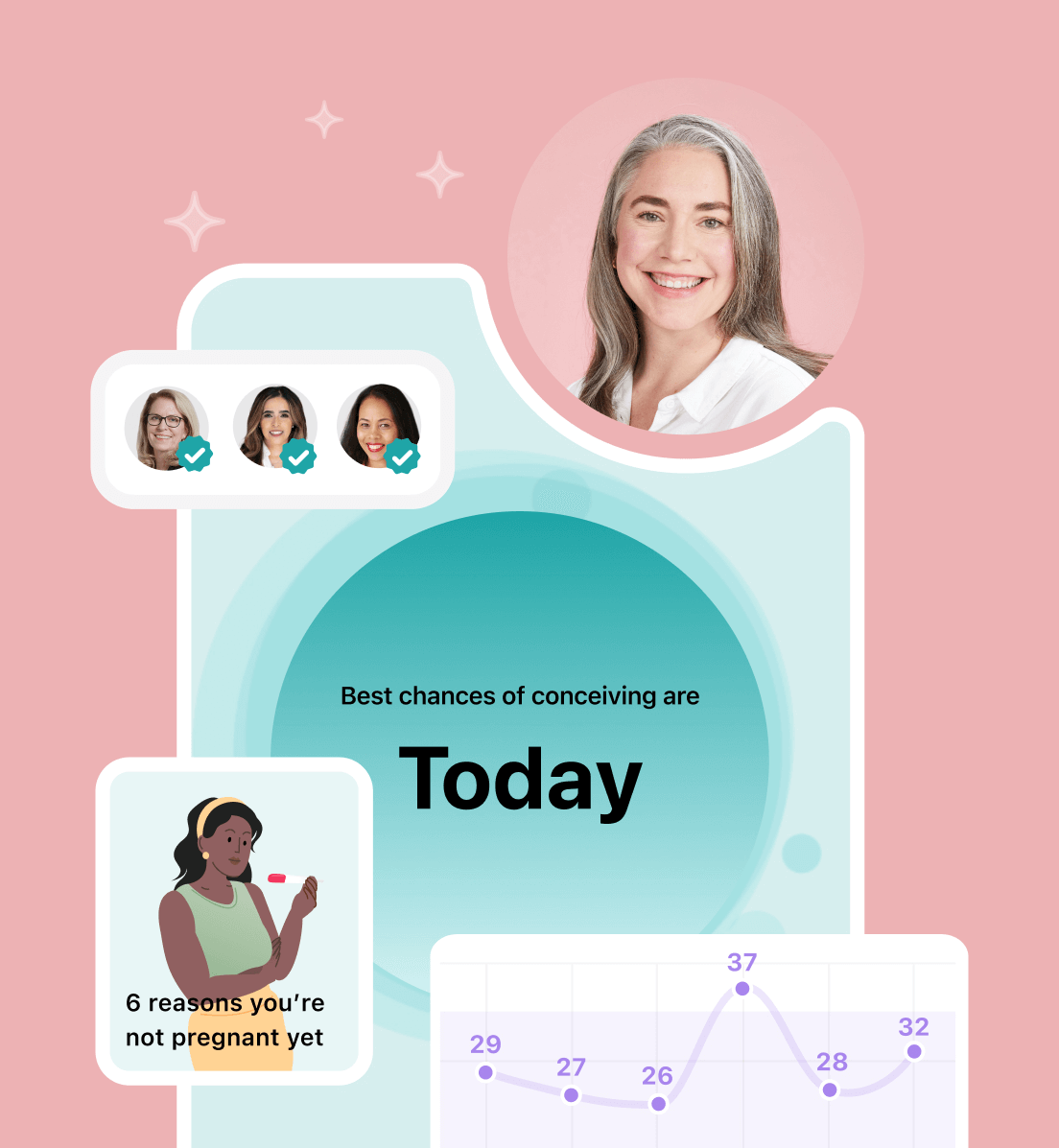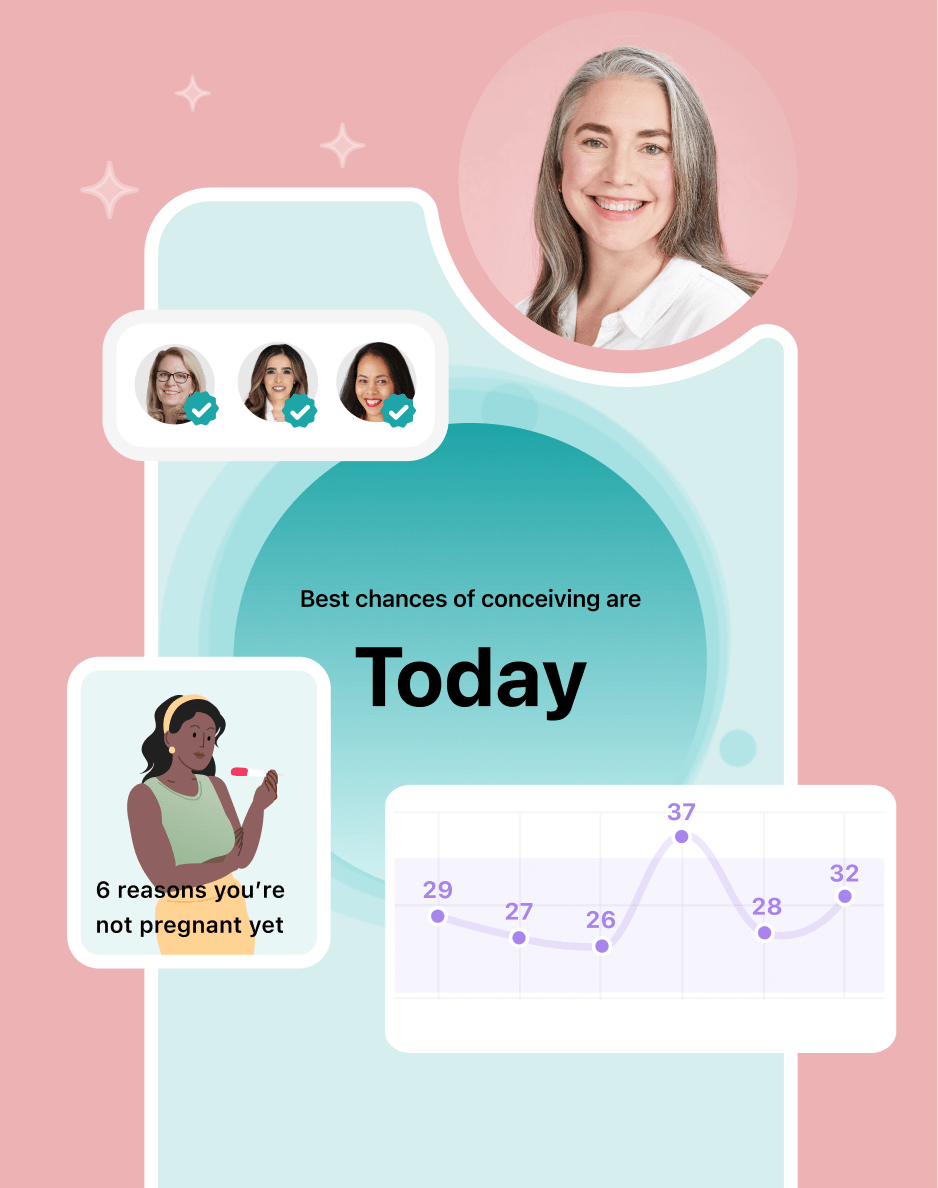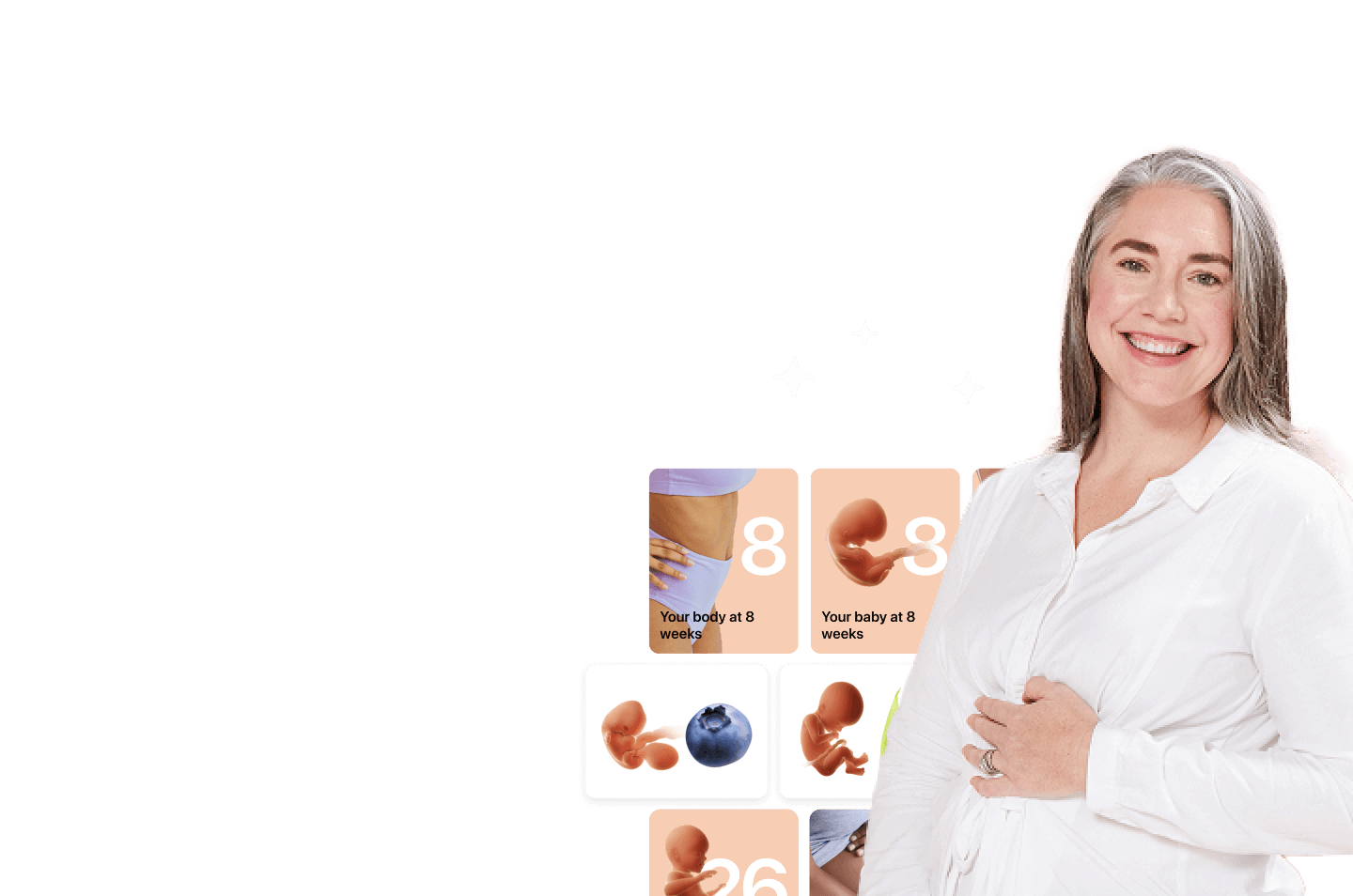An intrauterine device is a popular form of birth control. But how effective is it? With the help of an expert, we discover if it’s possible to get pregnant with an IUD.
-
Tracking cycle
-
Getting pregnant
-
Pregnancy
-
Help Center
-
Flo for Partners
-
Anonymous Mode
-
Flo app reviews
-
Flo Premium New
-
Secret Chats New
-
Symptom Checker New
-
Your cycle
-
Health 360°
-
Getting pregnant
-
Pregnancy
-
Being a mom
-
LGBTQ+
-
Quizzes
-
Ovulation calculator
-
hCG calculator
-
Pregnancy test calculator
-
Menstrual cycle calculator
-
Period calculator
-
Implantation calculator
-
Pregnancy weeks to months calculator
-
Pregnancy due date calculator
-
IVF and FET due date calculator
-
Due date calculator by ultrasound
-
Medical Affairs
-
Science & Research
-
Pass It On Project New
-
Privacy Portal
-
Press Center
-
Flo Accuracy
-
Careers
-
Contact Us
Can you get pregnant with an IUD? Advice from an OB-GYN


Every piece of content at Flo Health adheres to the highest editorial standards for language, style, and medical accuracy. To learn what we do to deliver the best health and lifestyle insights to you, check out our content review principles.
Intrauterine devices (IUDs) are one of the most effective forms of birth control, offering long-term protection with minimal maintenance — a win-win! But no contraceptive is totally foolproof.
If you’ve got an IUD, or are thinking about getting one, and have found yourself wondering, “Wait, could I still get pregnant?” it’s an understandable question. Knowing the facts can help you feel more in control. With the help of Dr. Charlsie Celestine, obstetrician and gynecologist, New Jersey, US, let’s explore how IUDs work, when they might fail, and what to do if you suspect you’re pregnant.
Key takeaways: Can you get pregnant with an IUD?
- An IUD is one of the most effective birth control methods, with a failure rate of less than 1%.
- While rare, pregnancy with an IUD can happen if the device doesn’t work properly or if it falls out, moves, or is not properly inserted.
- Signs of pregnancy with an IUD are the same as any pregnancy, including nausea, fatigue, and missed periods (although hormonal IUDs can stop your period completely, so this isn’t the most reliable sign). It’s useful to remember that these signs can be different from pregnancy to pregnancy.
- If you think you might be pregnant while using an IUD, reach out to your doctor right away to rule out possible complications like ectopic pregnancy.
What is an IUD, and how does it work?
An IUD is a small, T-shaped device that a medical professional inserts into your uterus. It’s a form of birth control called long-acting reversible contraception (LARC), which means that it can prevent pregnancy for a long time. The copper coil can last up to about 10 years (although some studies suggest it can still be effective for up to 12 years). A hormonal IUD, on the other hand, can prevent pregnancy for three to five years. Using LARC also means that if you decide you want to get pregnant, it can be removed at any time and you’ll regain your fertility.
You can get an IUD inserted at any point during your menstrual cycle, as long as you don’t have any signs of an infection and you’re not pregnant (it can also be used as emergency contraception). You can use an app like Flo to track where you are in your cycle.
There are two types to choose from, and depending on which IUD you choose, it could be a type of hormonal birth control or nonhormonal birth control.
Hormonal IUDs: These release progestin (a synthetic form of the hormone progesterone), which thickens your cervical mucus, making it hard for sperm to swim. It also thins your uterine lining, which makes it “difficult for a pregnancy implant,” explains Dr. Celestine. Sometimes, hormonal IUDs can stop ovulation (where your ovaries release an egg) altogether.
Copper IUDs: These don’t use hormones. Instead, the copper creates an inflammatory reaction, explains Dr. Celestine. This makes it difficult for sperm to move, meaning they’re unable to fertilize an egg.
Both types of IUD work really well — they’re more than 99% effective. That means fewer than 1 out of 100 women who use an IUD will get pregnant each year.

When you’re ready to stop using it, IUD removal is straightforward. Your doctor can take it out during a pelvic exam, using a tool to pull on the device’s strings. The whole thing should only take a few minutes, and although you may notice some mild cramping or spotting afterward, it should pass quickly.
Can you get pregnant with an IUD?
IUDs are very good at preventing pregnancy, but “there’s no birth control that is 100% effective even if used perfectly,” Dr. Celestine points out.
Although getting pregnant with an IUD is very rare, it can happen. As we mentioned earlier, fewer than 1 out of 100 women who use one will conceive while the IUD is in place.
Situations where an IUD could be less effective
While a copper or hormonal IUD is one of the most reliable birth control options, Dr. Celestine explains that its effectiveness can drop in the following scenarios:
- The IUD falls out: Sometimes, especially in the first few months, an IUD can slip out without you noticing. This is called IUD expulsion.
- The IUD moves out of place: If it shifts out of place, an IUD may not do its job properly.
- The IUD expires: Using an IUD beyond its recommended lifespan means it’s not as effective.
- The IUD hasn’t started to work: Unlike copper IUDs, which work immediately no matter when in the cycle they’re inserted, timing matters when it comes to hormonal IUDs. They can take up to a week to become effective if they’re put in place more than seven days after your period starts. So you shouldn’t have unprotected sex during the first week after insertion — you should use a backup form of birth control.
Possible signs of pregnancy with an IUD
Pregnancy with an IUD would come with the usual early signs of pregnancy, which can include:
- Missed periods (though hormonal IUDs can stop your period altogether, so this isn’t always a reliable sign)
- Nausea or vomiting
- Headaches
- Breast tenderness
- Fatigue
- Frequent need to pee
- Cramping
- Vaginal bleeding or spotting that isn’t your period (while this can be perfectly normal in the early stages of pregnancy, it’s always a good idea to get it checked out)
It’s important to remember, though, that these are just examples. We all experience pregnancy in a unique way, which means we experience different early pregnancy symptoms. So if anything feels off, take a test or check in with your doctor.
Take a quiz
Find out what you can do with our Health Assistant
Potential risks associated with getting pregnant with an IUD
Although it’s extremely unlikely you’ll get pregnant with an IUD, if it does happen, there are some potential complications to be aware of.
Ectopic pregnancy: This is when the fertilized egg implants outside the uterus, usually in the fallopian tubes. It’s rare (only 1% to 2% of pregnancies are ectopic, according to a US study), but there’s a slightly higher chance of it happening if you get pregnant while using an IUD. “Many people come to me with the concern that an IUD will lead to ectopic pregnancy,” says Dr. Celestine. “If you do get pregnant with an IUD in place, you have a higher likelihood of that pregnancy being ectopic. But overall your chances of getting pregnant at all with an IUD in place are very, very low.”
Ectopic pregnancies need to be treated, either with medication or with surgery, to avoid becoming life threatening. That means they can’t lead to the birth of a baby. Symptoms include vaginal bleeding; pain in your lower abdomen, pelvis, and lower back; and feeling dizzy or weak. If you notice any of these, speak with your doctor right away to see what the cause is.
Higher miscarriage risk: Having an IUD in the uterus can increase the chance of miscarriage, according to research.
Preterm birth: Studies suggest that pregnancy with an IUD can bring the risk of giving birth early. Any baby born before 37 weeks of pregnancy is described as a preterm birth.
Infections: There’s a higher chance of developing infections if you got pregnant while having an IUD inserted, research shows. This could be risky for you and your baby, so you’ll likely be monitored a little more closely.
As with any pregnancy complication, these are just risks and not guarantees. But even still, it’s important to speak to your doctor as soon as possible if you think you could be pregnant and have an IUD, or if you have any doubts about your IUD at all. It’s best to be on the safe side, and they’ll be able to give you the right care. If it turns out you are pregnant and you want to continue with your pregnancy, your doctor will remove the IUD if they can still see the strings in your cervix. This can reduce your risk of miscarriage and infection.
Frequently asked questions about whether you can get pregnant with an IUD
Can you take a pregnancy test with an IUD?
You can take a pregnancy test if you have an IUD, as it won’t affect the results. Home pregnancy tests pick up a hormone called human chorionic gonadotropin (hCG) in your urine, and an IUD (whether copper or hormonal) doesn’t interfere with that. So if you think you might be pregnant, it’s always worth doing a test.
Should you worry about pregnancy with an IUD?
You don’t need to be too concerned. The chances of pregnancy with an IUD are super low. But if you notice symptoms or something doesn’t feel right, check in with your doctor.
Can you get pregnant with an IUD while ovulating?
Technically you can get pregnant with an IUD while you’re ovulating. The copper IUD doesn’t stop ovulation, but it does make it almost impossible for sperm to reach an egg. Hormonal IUDs do often stop ovulation, but if your ovaries do release an egg, and the IUD isn’t placed correctly, there’s a chance pregnancy could happen. It’s still really unlikely though.


Hey, I'm Anique
I started using Flo app to track my period and ovulation because we wanted to have a baby.


The Flo app helped me learn about my body and spot ovulation signs during our conception journey.


I vividly
remember the day
that we switched
Flo into
Pregnancy Mode — it was
such a special
moment.
Real stories, real results
Learn how the Flo app became an amazing cheerleader for us on our conception journey.
References
“Am I Pregnant?” Cleveland Clinic, my.clevelandclinic.org/health/articles/9709-pregnancy-am-i-pregnant. Accessed 9 Apr. 2025.
“Appendix D: Contraceptive Effectiveness.” Morbidity and Mortality Weekly Report, vol. 63, 25 Apr. 2014, p. 47, www.cdc.gov/mmwr/preview/mmwrhtml/rr6304a5.htm.
Chu, Yu-Qun, et al. “Early Intrauterine Pregnancy with an Intrauterine Device in Place and Terminated with Spontaneous Abortion: A Case Report.” Medicine, vol. 103, no. 16, Apr. 2024, https://doi.org/10.1097/MD.0000000000037843.
“Copper Coil (IUD).” NHS Inform, 22 Oct. 2024, www.nhsinform.scot/healthy-living/contraception/copper-coil-iud/.
“Ectopic Pregnancy.” Cleveland Clinic, my.clevelandclinic.org/health/diseases/9687-ectopic-pregnancy. Accessed 9 Apr. 2025.
“Emergency Contraception.” The American College of Obstetricians and Gynecologists, Apr. 2025, www.acog.org/womens-health/faqs/emergency-contraception.
Frisse, Ann, et al. “Effect of Intrauterine Device Malposition on Pregnancy Occurrence [A38].” Obstetrics and Gynecology, vol. 139, May 2022, pp. 11S–12, http://dx.doi.org/10.1097/01.aog.0000826488.54564.17.
“FSRH Statement: Guidance to Support Clinical Practice during Copper Intrauterine Device Shortages.” The Faculty of Sexual and Reproductive Healthcare, 22 Sep. 2023, www.fsrh.org/Public/Documents/fsrh-statement-copper-intrauterine-device-shortage.aspx.
“Hormonal IUD (Mirena).” Mayo Clinic, 11 Apr. 2024, www.mayoclinic.org/tests-procedures/mirena/about/pac-20391354.
“Intrauterine Device (IUD).” Cleveland Clinic, my.clevelandclinic.org/health/treatments/24441-intrauterine-device-iud. Accessed 9 Apr. 2025.
Kim, Sun Kwon, et al. “The Prognosis of Pregnancy Conceived despite the Presence of an Intrauterine Device (IUD).” Journal of Perinatal Medicine, vol. 38, no. 1, 2010, pp. 45–53, https://doi.org/10.1515/jpm.2009.133.
“Long-Acting Reversible Contraception (LARC): Intrauterine Device (IUD) and Implant.” The American College of Obstetricians and Gynecologists, Apr. 2024, www.acog.org/womens-health/faqs/long-acting-reversible-contraception-iud-and-implant.
Mann, Laura M., et al. “Trends in Ectopic Pregnancy Diagnoses in United States Emergency Departments, 2006-2013.” Maternal and Child Health Journal, vol. 24, no. 2, Feb. 2020, pp. 213–21, https://doi.org/10.1007/s10995-019-02842-0.
“Ovulation.” Cleveland Clinic, my.clevelandclinic.org/health/articles/23439-ovulation. Accessed 9 Apr. 2025.
“Pregnancy Tests.” Cleveland Clinic, my.clevelandclinic.org/health/diagnostics/9703-pregnancy-tests. Accessed 9 Apr. 2025.
“Preterm Birth.” World Health Organization, 10 May 2023, www.who.int/news-room/fact-sheets/detail/preterm-birth.
“Side Effects of an IUD (Intrauterine Device) or Copper Coil.” NHS, www.nhs.uk/contraception/methods-of-contraception/iud-coil/side-effects/. Accessed 9 Apr. 2025.
“Signs and Symptoms of Pregnancy.” NHS, www.nhs.uk/pregnancy/trying-for-a-baby/signs-and-symptoms-of-pregnancy/. Accessed 9 Apr. 2025.
“Using Long-Acting Reversible Contraception (LARC) Right after Childbirth.” The American College of Obstetricians and Gynecologists, Mar. 2023, www.acog.org/womens-health/faqs/using-long-acting-reversible-contraception-right-after-childbirth.
Xiong, X., et al. “IUD Use and the Risk of Ectopic Pregnancy: A Meta-Analysis of Case-Control Studies.” Contraception, vol. 52, no. 1, July 1995, pp. 23–34, https://doi.org/10.1016/0010-7824(95)00120-Y.




